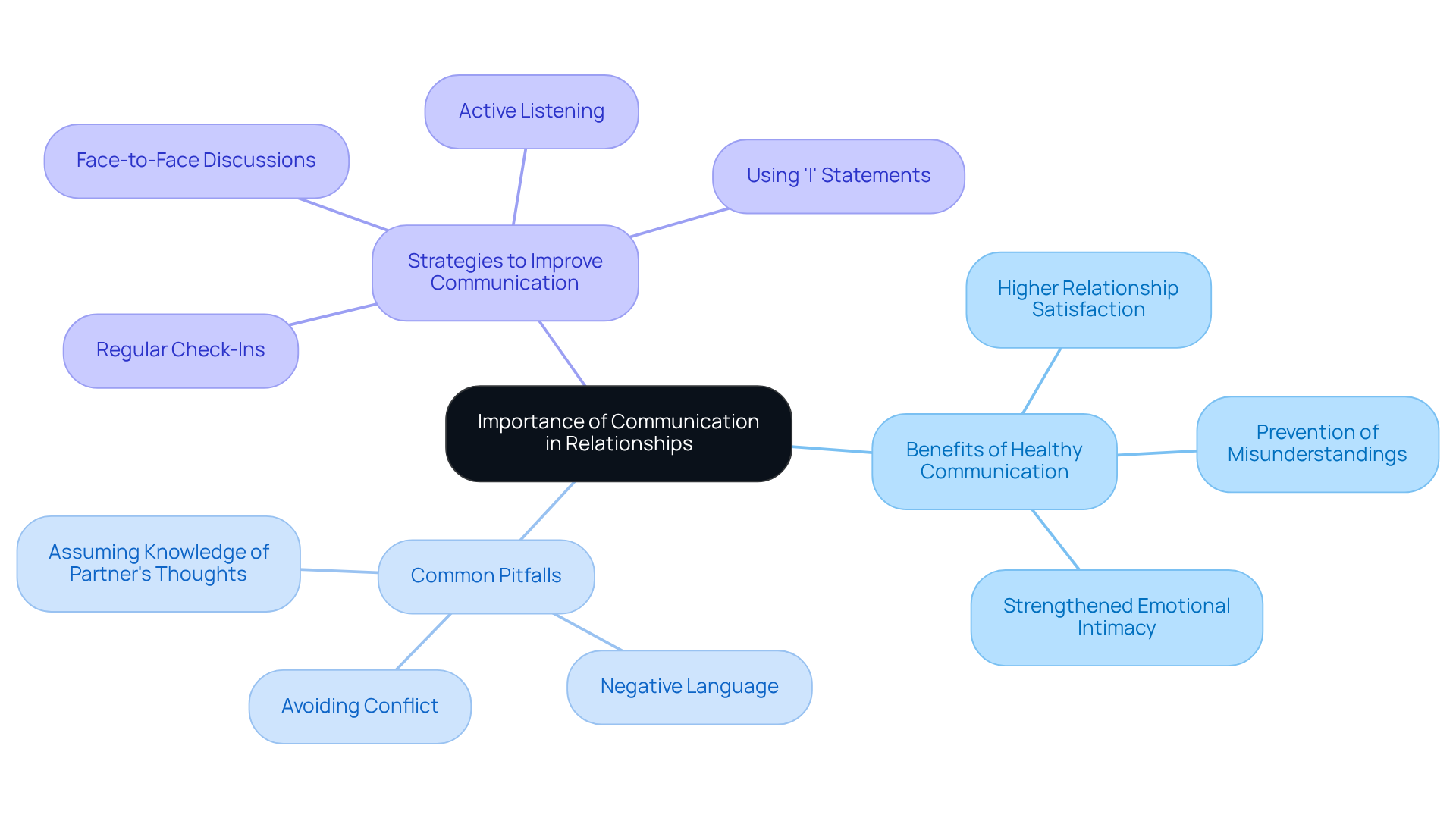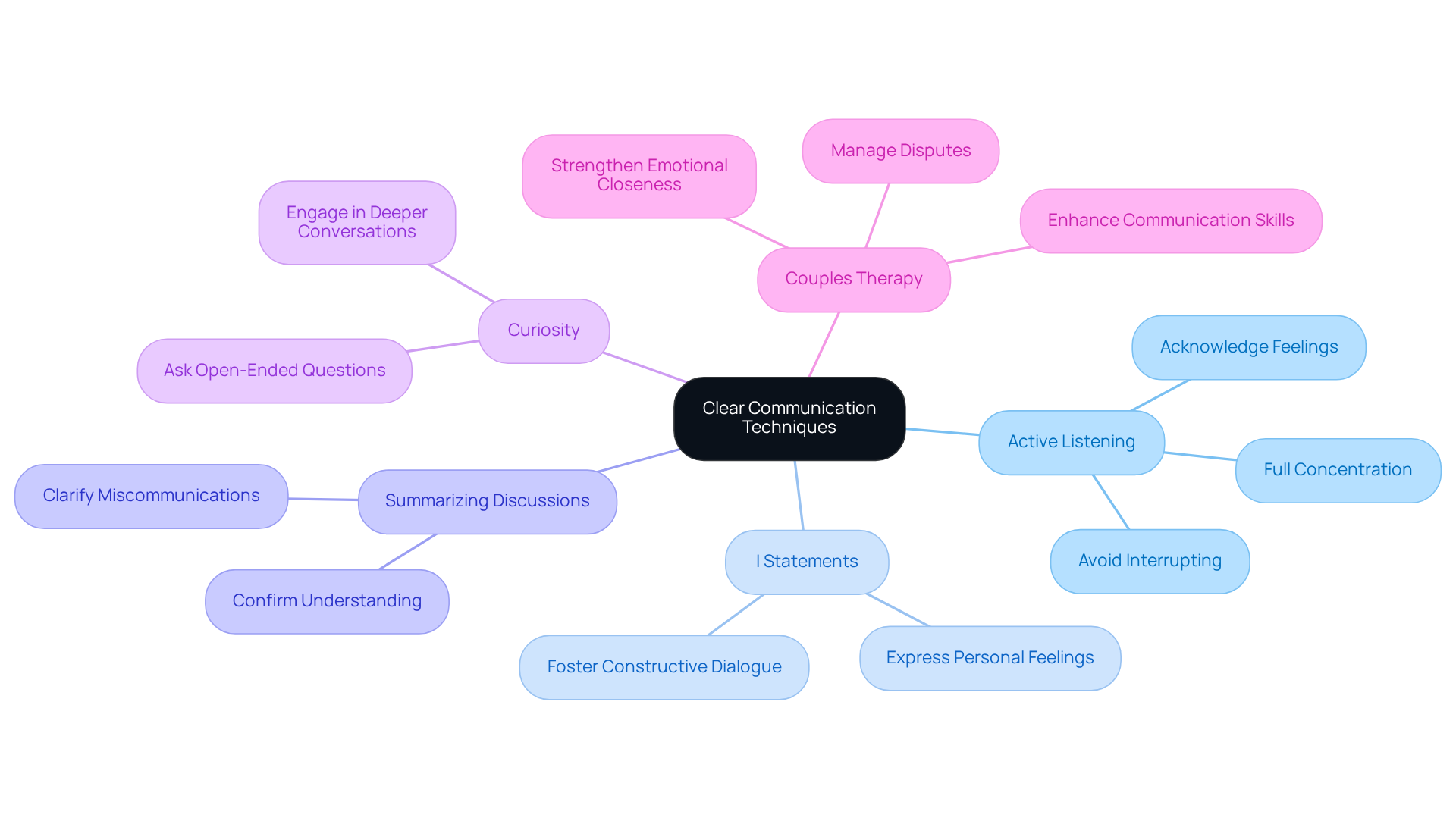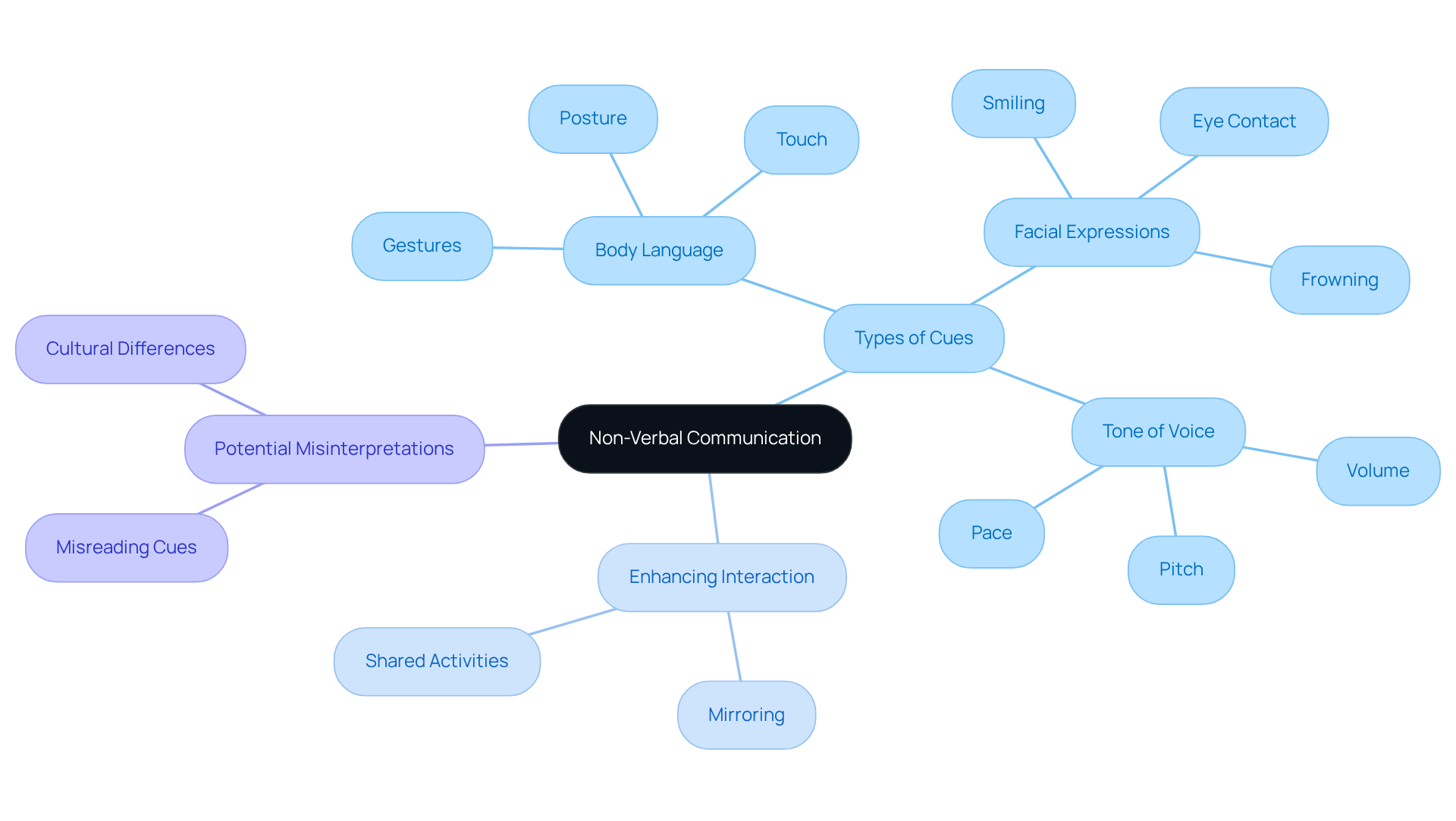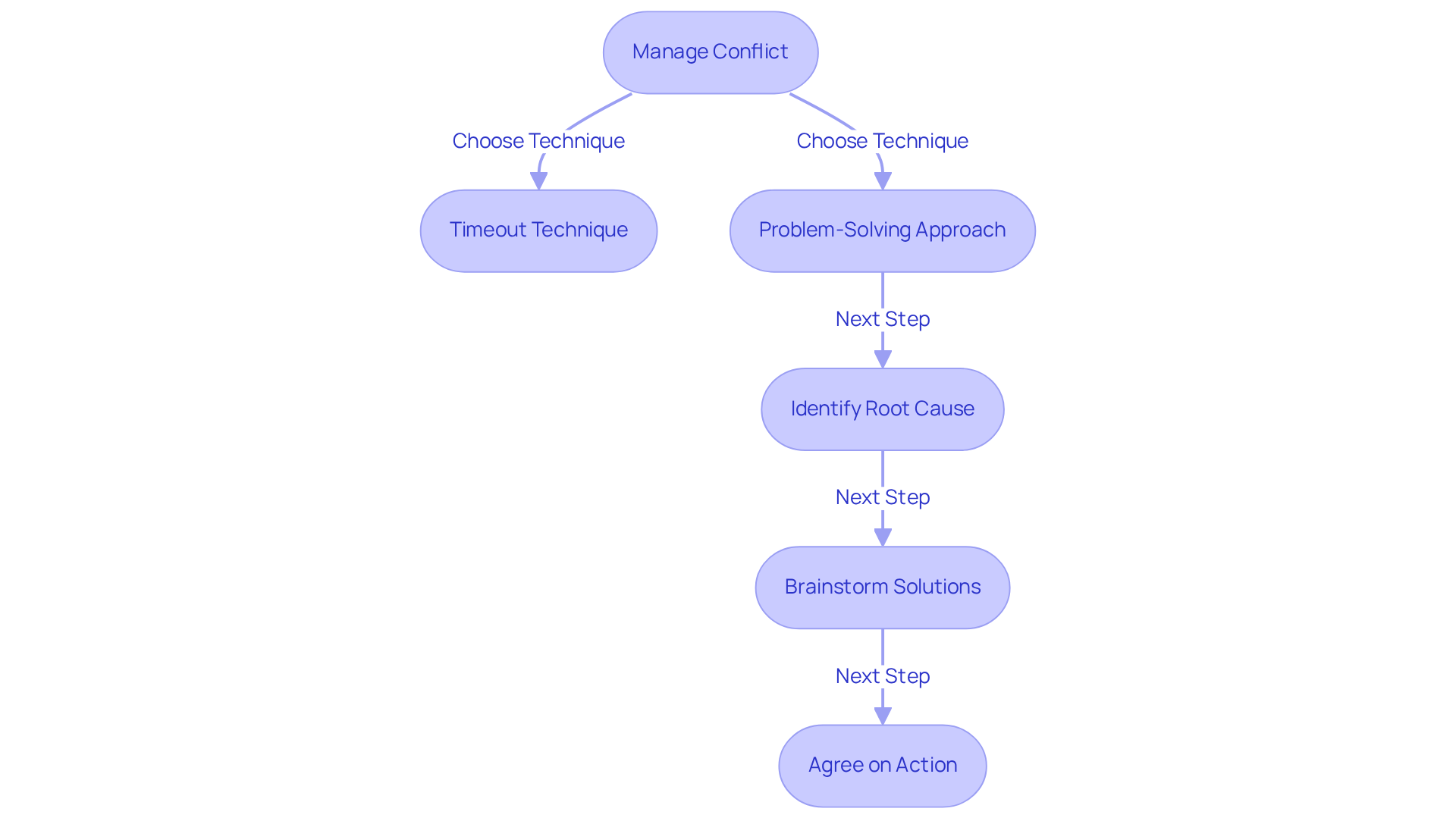Overview
Healthy communication in relationships is pivotal and can be cultivated through strategies such as:
- Regular check-ins
- Active listening
- Recognizing non-verbal cues
These techniques are not merely suggestions; they are essential for preventing misunderstandings and resolving conflicts effectively. Research has shown a direct link between communication issues and high divorce rates, underscoring the necessity of these practices. By enhancing relationship satisfaction through improved communication, couples can foster a more fulfilling partnership.
Introduction
Healthy communication serves as the foundation of thriving relationships. Yet, many couples find themselves grappling with this essential skill. By comprehending and applying effective communication strategies, partners can significantly enhance their emotional connection and overall satisfaction.
However, with common pitfalls and misunderstandings lurking at every turn, how can couples ensure their messages are not only heard but truly understood? This article explores four key strategies that empower partners to communicate with clarity, foster intimacy, and effectively manage conflicts, ultimately transforming their relationships for the better.
Understand the Importance of Communication in Relationships
Healthy communication serves as the cornerstone of any successful interaction, enabling partners to articulate their thoughts, emotions, and needs with clarity. Research consistently demonstrates that partners engaging in constructive interaction styles report significantly higher levels of relationship satisfaction. Notably, studies reveal that 67.5% of divorces in the U.S. arise from communication issues, highlighting the critical role of healthy communication in sustaining strong partnerships.
To nurture this vital skill, partners must prioritize regular check-ins, creating a space to share feelings and experiences in a supportive atmosphere. This practice not only fortifies emotional intimacy but also equips individuals to address misunderstandings proactively, thereby preventing conflicts from escalating. Moreover, discussing serious topics face-to-face is essential to avoid misinterpretations, as messages can easily be misconstrued in text form. By fostering healthy communication, couples can navigate challenges more effectively, ultimately enhancing their connection and satisfaction within the relationship.
Common pitfalls in interaction to avoid include:
- Assuming knowledge of a partner's thoughts
- Employing negative language, which can trigger defensiveness and conflict
Gaining insight into each other's daily experiences can also aid in preventing misunderstandings and reinforcing the bond between partners.

Implement Clear Communication Techniques
To enhance clarity in interactions, couples must adopt specific techniques such as active listening, utilizing 'I' statements, and summarizing discussions. Active listening demands full concentration on the speaker, acknowledging their feelings, and responding thoughtfully. For example, instead of saying, 'You never listen to me,' one might express, 'I feel unheard when you look at your phone while I’m talking.' This shift not only conveys personal feelings but also fosters constructive dialogue. Moreover, it is essential to avoid interrupting the speaker, as this can hinder effective communication and lead to misunderstandings.
Curiosity also plays a crucial role in fostering engagement during conversations. By asking open-ended questions, individuals can delve deeper into each other's thoughts and feelings, thereby enhancing their connection. Summarizing discussions serves as another effective strategy to ensure both parties are aligned. After discussing a topic, one participant can summarize the main points to confirm understanding. This technique clarifies potential miscommunications and reinforces the significance of each individual's perspective, fostering a deeper connection and mutual respect. Additionally, engaging in couples therapy can provide essential strategies for enhancing interaction abilities, assisting partners in managing disputes and strengthening their emotional closeness.

Recognize the Role of Non-Verbal Communication
Non-verbal interaction encompasses body language, facial expressions, and tone of voice, all of which play a crucial role in how messages are interpreted. Studies indicate that 80 to 90 percent of communication is nonverbal, emphasizing the significance of these cues in relationships. For example, maintaining eye contact can express interest and engagement, while crossed arms may indicate defensiveness. Couples must be aware of their non-verbal signals and strive for healthy communication to achieve alignment between their words and actions, thereby cultivating deeper connections.
To enhance non-verbal interaction, individuals should consider:
- Mirroring each other's body language during conversations.
- Engaging in shared activities that require minimal verbal interaction.
This practice fosters a sense of connection and understanding. Such synchronization not only strengthens emotional bonds but also reflects the concept of 'tie signs,' like holding hands or maintaining close proximity, which signify intimacy. Moreover, being conscious of one’s own non-verbal cues can aid in effectively expressing emotions, ensuring that partners feel acknowledged and valued. Touch serves as a vital non-verbal cue in any relationship and is arguably the most significant form of non-verbal communication in romantic relationships, as noted by Ivy D. K.
However, it is essential to remain vigilant against misinterpreting non-verbal cues, as this can lead to communication breakdowns. By being intentional and aware, partners can navigate these complexities and enhance their relational dynamics through healthy communication.

Manage Conflict Through Effective Communication Strategies
To manage conflict effectively, partners should adopt strategies that promote calmness, focus on the issue at hand, and avoid personal attacks. One particularly effective method is the 'timeout' technique, where individuals agree to take a break when emotions escalate. Research by John Gottman indicates that taking a break for a duration of 20 minutes to 24 hours allows both individuals to cool off and reflect before revisiting the discussion, ultimately leading to more constructive conversations.
Additionally, employing a problem-solving approach can significantly enhance conflict resolution. This involves:
- Identifying the root cause of the disagreement
- Brainstorming potential solutions collaboratively
- Agreeing on a course of action
For instance, if two individuals disagree about household responsibilities, they can work together to develop a chore chart that accommodates both partners' preferences and schedules. This not only addresses the current conflict but also promotes teamwork and mutual respect, thereby strengthening the foundation of the connection.
Research indicates that the first few minutes of a disagreement can set the tone for the entire conversation, making it crucial for couples to remain open-minded and avoid assumptions. In fact, studies show that the initial three minutes of a fight can influence the future of a connection. By practicing patience and using 'I' statements to express feelings, partners can prevent blame and promote understanding, leading to healthy communication. Ultimately, these strategies not only address conflicts but also strengthen the relationship over time.

Conclusion
Healthy communication is fundamental to nurturing and sustaining strong relationships. By prioritizing clear and constructive dialogue, partners can significantly enhance their emotional connection and overall satisfaction. Effective communication not only helps in expressing needs and feelings but also plays a crucial role in preventing misunderstandings and conflicts that can jeopardize partnerships.
Key strategies include:
- Regular check-ins to foster openness
- Active listening techniques to ensure clarity
- The importance of non-verbal cues in conveying emotions
Moreover, managing conflicts through structured approaches, such as the 'timeout' technique, allows couples to address disagreements thoughtfully and collaboratively. These insights underscore the necessity of being intentional in communication to build trust and intimacy.
In conclusion, the significance of healthy communication in relationships cannot be overstated. By implementing these strategies, couples can create a supportive environment that encourages vulnerability and understanding. Investing time and effort in improving communication skills is essential for any partnership aiming for longevity and fulfillment. Embrace these practices to not only resolve conflicts but to deepen the bond with your partner, fostering a relationship that thrives on mutual respect and love.
Frequently Asked Questions
Why is communication important in relationships?
Healthy communication is essential as it enables partners to articulate their thoughts, emotions, and needs clearly, contributing to higher levels of relationship satisfaction.
What percentage of divorces in the U.S. are attributed to communication issues?
Research indicates that 67.5% of divorces in the U.S. arise from communication issues, emphasizing the importance of effective communication in maintaining strong partnerships.
How can partners improve their communication skills?
Partners can enhance their communication by prioritizing regular check-ins to share feelings and experiences in a supportive atmosphere, which helps in addressing misunderstandings and preventing conflicts.
Why is face-to-face communication important for serious topics?
Discussing serious topics face-to-face is crucial to avoid misinterpretations, as messages can easily be misconstrued when communicated through text.
What are some common pitfalls to avoid in communication?
Common pitfalls include assuming knowledge of a partner's thoughts and using negative language, which can trigger defensiveness and conflict.
How can understanding each other's daily experiences benefit a relationship?
Gaining insight into each other's daily experiences can help prevent misunderstandings and reinforce the bond between partners.




